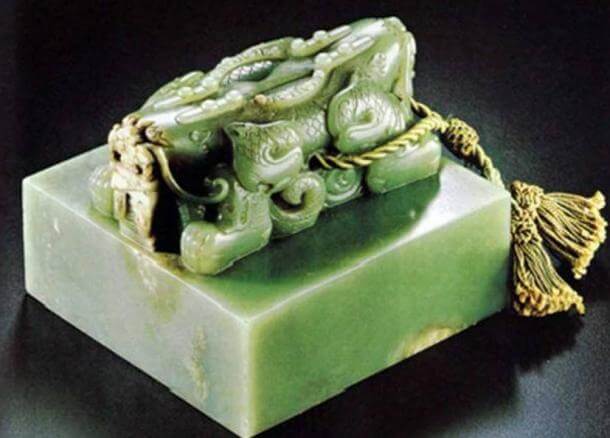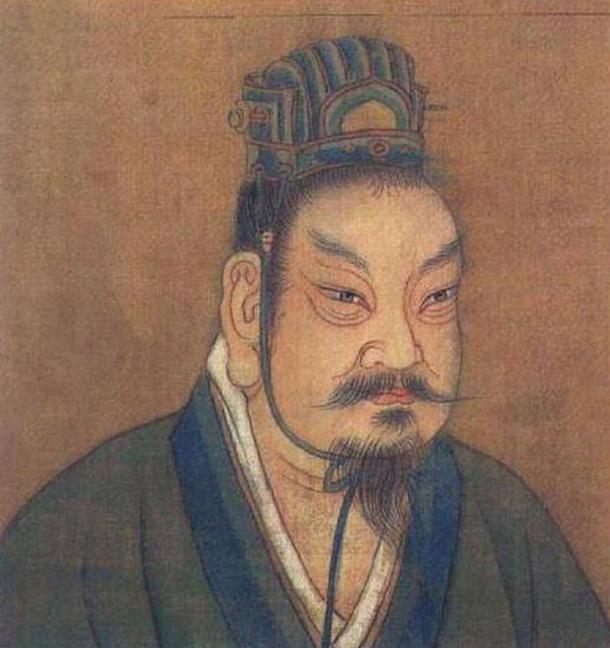 7
7




 7
7

 2
2

 21. 04. 2024
21. 04. 2024

 20. 04. 2024
20. 04. 2024
 4
4

 19. 04. 2024
19. 04. 2024
 03. 02. 2020
03. 02. 2020

In the first episode of the Lost Seal of the First Chinese Emperor, we talked about the history of seals and about Emperor Qin Shi Huang himself, who united China and had a rare artifact created in the form of an Imperial Seal. Although the jade was a highly valued material, the Emperor was not enough to make his seal from an ordinary piece of this gem. For this purpose a special piece of jade - He Shi Bi (和 氏 přelož) - translated as "Pan".

Legend has it that a man named He found a piece of raw jade in the mountains near Chu. The man brought this piece of jade to Hu, where he presented it to the king (one version is King Li and the other King Wu). The king asked his jeweler to investigate this piece. But the jeweler told him that he had an ordinary stone in his hands without any value. Thinking that the man had tried to trick him, the king cut off his left leg as punishment. As the king died, the punished man returned and presented the stone to the new king (King Wu in one version and King Wen in the other version). The scenario was repeated - a jeweler was summoned to give the same verdict and the man lost his left leg.
Legend has multiple versions. According to one, the crippled man returned to the foothills of Hu, and cried for three days and three nights, crying so intensely that his tears were exhausted and blood dripped from his eyes. When the king heard about it, he thought the man was too worried about his loss. He sent his servants to ask him. The man told them he was crying because he was described as a liar. When the king learned this, he kept this information in his head. So he had the stone cut and polished to obtain its inner treasure. In one version it was not King Wu, but Cheng, who was supposed to cut and polish the jade.
When Qin Shi Huang became emperor, He Shi Bi fell into his hands and he created the hereditary seal of the empire. There is the historical phrase "shou mingy u tian, ji shou yong chang" (受命 於 天, 既 壽 壽), which means: "After receiving a heavenly mandate, the emperor can live a long and prosperous life. Unfortunately, it is not known where the seal is located and whether it was destroyed. Interestingly, the imperial seal of the Song Dynasty is associated with a similar phrase - "huang di shou ming, ty de zhe chang" (皇帝 受命, 有德 者 昌), which means: "The emperor was given the mandate of heaven virtue, thrives. ”
There is one more story. It says Qin Shi Huang threw a seal into Dong Ting Lake to ensure the smooth running of his voyage. Eight years later, the farmer was to find the seal and returned it to the Emperor. But it may be a fiction from the Han Dynasty, because this story could serve to make the impression that Qin Shi Huang was a terrible ruler who thought only of himself.
Obviously, the seal survived the Qin Dynasty and was inherited by the Emperor of the Han Dynasty. It is said that the seal was lost after the death of Regent He Jin due to the overall chaos. After some time, Sun Jian, a warrior, found himself in the well when he and Han's troops pulled Han on the ground and occupied Luoyang. The seal was then taken by his superior Yuan Shu and then Cao Cao. The Seal was handed over by the Emperor from the Emperor for three kingdoms.

It is not entirely clear where the seal eventually disappeared. The various sources of its disappearance rank between the end of the Tang Dynasty and the end of the Yuan Dynasty. With the beginning of the Ming Dynasty, it is clear that the seal was lost definitively. The founder of the latter dynasty, Zhu Yuan Zhang reportedly went to Mongolia to look for the seal. Unfortunately, it failed. Standard seals were produced in the Ming Dynasty, which continued into the Qing Dynasty.
It is said that the Emperor Qi-lung had 1800 seals, of which 700 were lost. A thousand of these seals, including the 25 seals known as the Qing Dynasty Imperial Seals, are now stored in the Palace Museum in Beijing's Forbidden City. One of these seals was even auctioned at an incredible 21 million euros, XNUMX times its estimated price.
But after the most famous of the seals, the mythical artifact, which was also a symbol of power, there is no monument. If the artifact has not been destroyed, one day it may be discovered. Or the mystery will continue and the only memory will be the records with spaces.